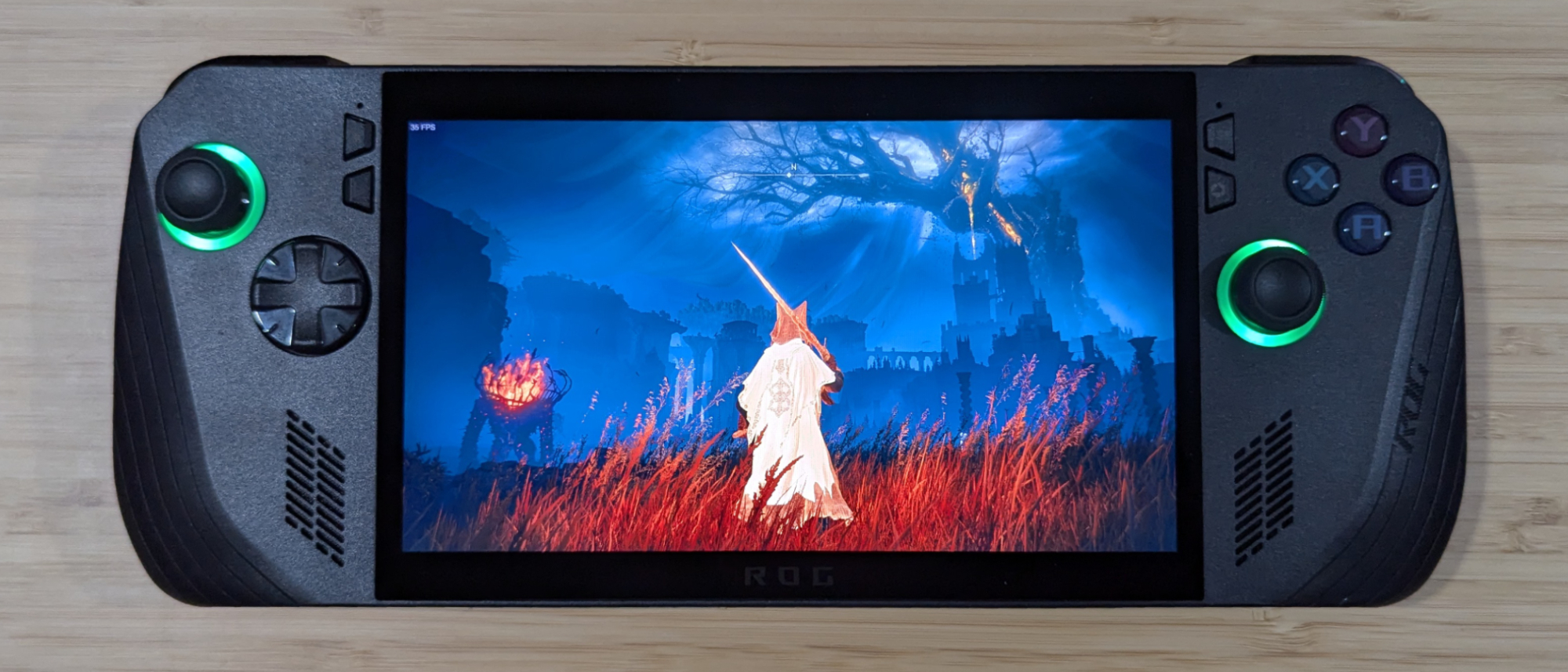Laptop Mag Verdict
The Asus ROG Ally X is exactly what it should be: A fantastic mid-cycle refresh that improves what’s already there while maintaining a competitive price point.
Pros
- +
Ergonomically fantastic
- +
Solid gaming performance
- +
Excellent battery life
- +
24GB of RAM
- +
Thunderbolt 4
Cons
- -
D-pad too close to the screen
- -
The price relative to performance improvements may only appeal to dedicated gaming enthusiasts
Why you can trust Laptop Mag
The Asus ROG Ally X brings much-needed improvement to an already great handheld.
I fell in love with the Asus ROG Ally when I first tested it last year. The power of a gaming PC in the palm of your hand still blows my mind.
But now that the novelty has worn off, Asus can’t rest on its laurels and expect to be taken seriously without good reason, especially when so many companies are entering the Windows gaming handheld market.
That’s exactly why the Asus ROG Ally X exists. The company has refined its predecessor’s flaws in small yet vital ways without drastically raising the price point. Keep reading to see why the Asus ROG Ally X is my new favorite Windows gaming handheld.
Asus ROG Ally X: Specs
| Price | $799 |
| CPU | AMD Ryzen Z1 Extreme |
| RAM | 24GB LPDDR5X-7500 |
| Display | 7-inch, 1080p, 120Hz, 500 nits |
| Battery | 2:15 (Gaming) |
| Size | 11 x 4.4 x 1~1.5 inches |
| Weight | 1.5 pounds |
Asus ROG Ally X: Price and configuration
The Asus ROG Ally X we reviewed is available for $799 at Best Buy. It’s built with an AMD Ryzen Z1 Extreme processor, 24GB of RAM, and 1TB of SSD storage. It has a 7-inch, 1,920 x 1,080 display with a 120Hz refresh rate.
It’s similar to the original Asus ROG Ally, except it bumps the RAM up to 24GB and the storage up to 1TB of SSD. It’s also been redesigned with additional ports. Otherwise, its display and processor are identical to the $649 original.
Asus ROG Ally X: Design
Small changes in design are expected during a mid-cycle refresh, but I was a bit shocked when I pulled the Ally X out of its box.
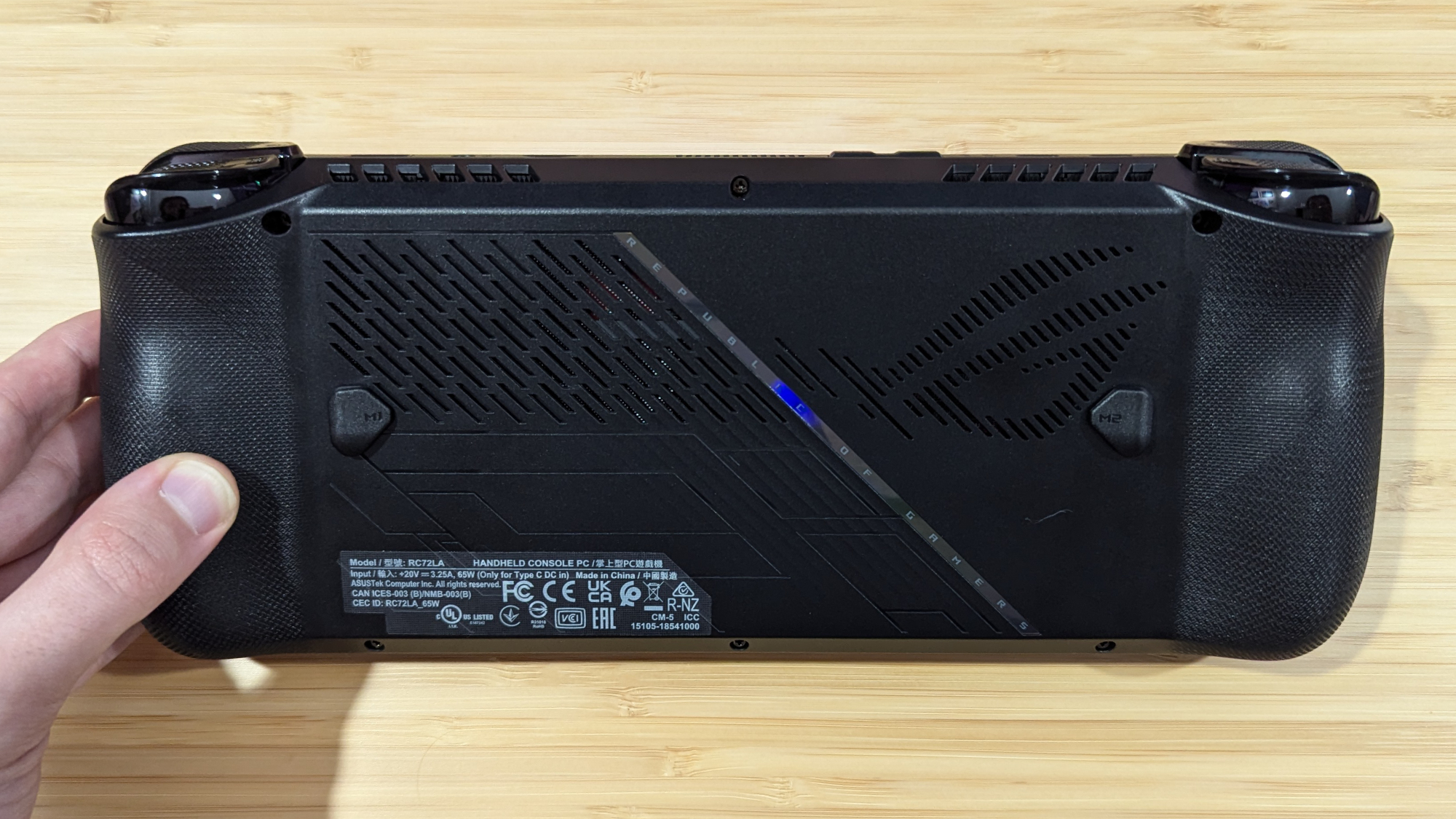
Its new black color scheme is the apparent change here, but beyond that, the Ally X is an ergonomic masterpiece from front to back. Its bumpers and triggers boast a newfound springiness, the joysticks feature additional tension, the grips are thicker and easier to hold, and the back buttons are closer to the center, allowing the user to grip the handheld without accidentally pressing them. After playing with the Ally X, returning to the original Ally is a massive difference — and if it wasn’t obvious, I prefer the Ally X.
However, there’s one minor flaw with the Ally X’s redesign: The D-Pad is incredibly close to the screen. While it may not seem like this matters on paper, I have accidentally tapped the display multiple times while pressing down on the right side of the D-Pad. This has caused issues while gaming or using the digital keyboard to type something.
Weighing 1.5 pounds and measuring 11 x 4.4 x 1~1.5 inches, the only thing that the Ally X sacrifices is that it is a tad bulkier and heavier than the original Asus ROG Ally (1.3 pounds, 11 x 4.4 x 0.8 inches). Yet even then, Competitors like the MSI Claw (1.5 pounds, 11.6 x 4.6 x 0.9 inches) and Lenovo Legion Go (1.9 pounds, 8.3 x 5.2 x 0.8 inches) are either in this range or larger, so it’s not a big deal.
Asus ROG Ally X: Security
The Ally X hasn’t made any changes in security, but it still features the same fingerprint reader on the power button. It is compatible with Windows Hello, and the Ally X will ask the user if they’d like to set it up when they open the device for the first time. I highly recommend it, as it’s far more convenient than using a password or PIN. The Ally X’s only change is that the power button is marginally embedded into the device’s top rim, whereas it’s level with it on the Ally.
Asus ROG Ally X: Ports
Asus has not gone cheap in the port department when it comes to the Ally X. At the top are two USB Type-C ports, one of which is Thunderbolt 4, alongside a microSD slot and an audio jack. The original Ally featured a ROG XG Mobile Interface and USB Type-C combo port, replaced by the extra addition of a Thunderbolt 4.
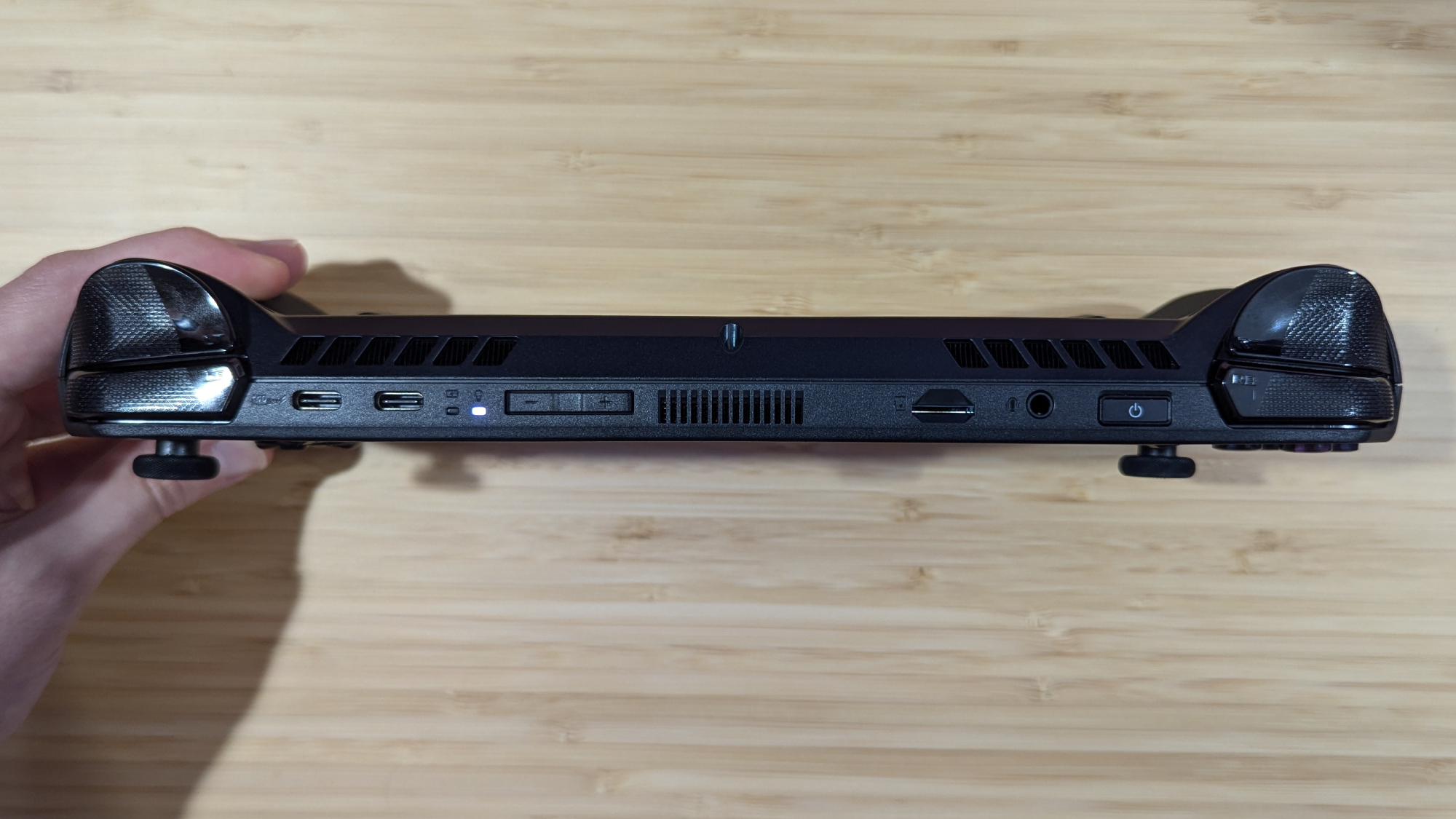
The inclusion of Thunderbolt 4 is massive. It allows you to connect the best docking stations to your Ally, which can provide a whole new selection of ports. You can even plug an HDMI into the device if you want to connect your Ally to a TV.
Asus ROG Ally X: Display
If you’ve used the Asus ROG Ally’s display, there’s a little new information here. Asus has lowered the minimum nits to make it dimmer, which is perfect for gaming in the dark. Beyond that, it features the same 7-inch, 1920 x 1080 panel at 120Hz rated at 500 nits of brightness.
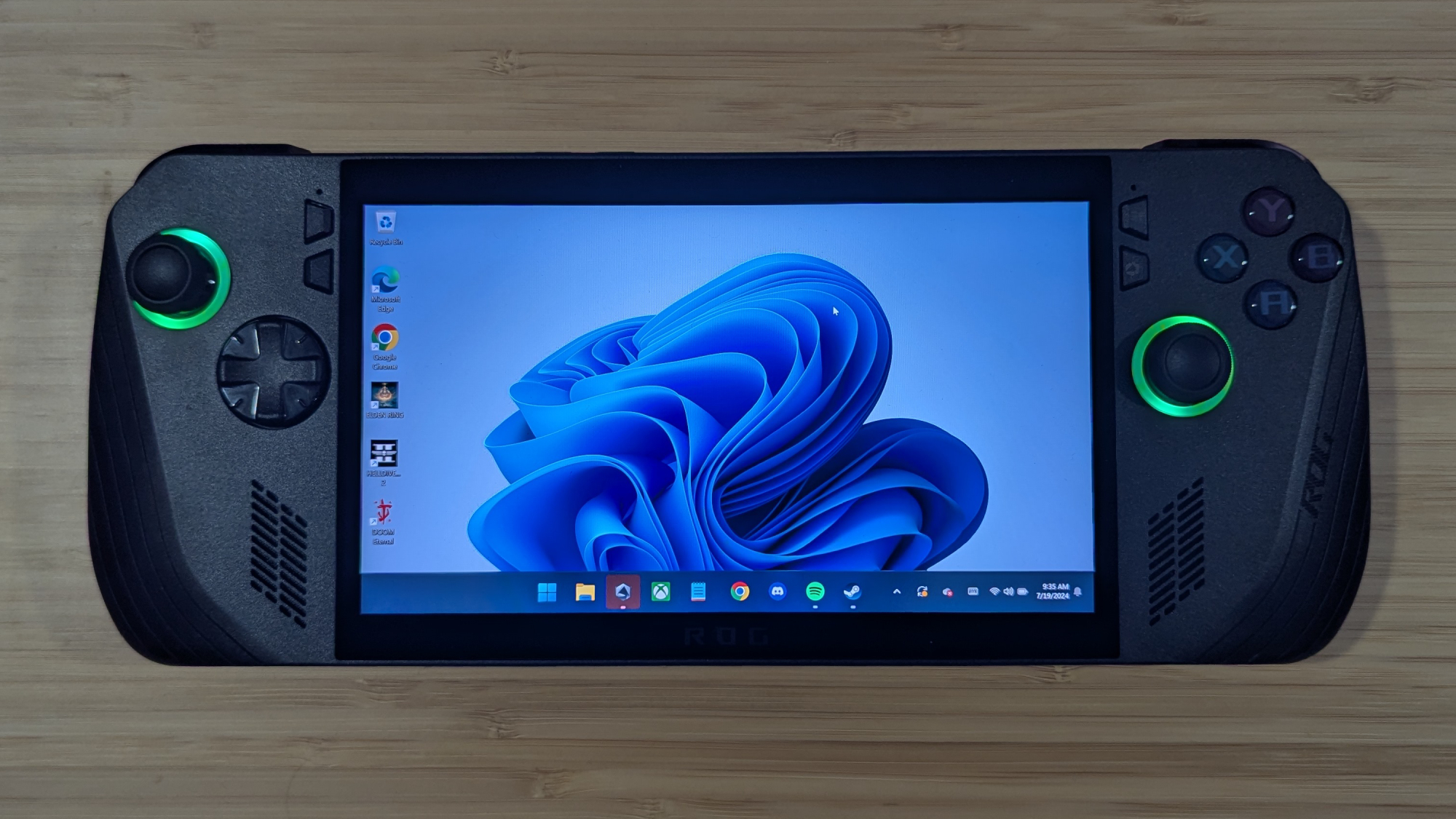
I launched Elden Ring: Shadow of the Erdtree and was satisfied with how Ally X’s panel represented the dark purple glow stretched across the sky. The roaring fire of my character’s torch and the rustling of vibrant foliage boasted a solid fullness of color. The screen can also get pretty darn bright; I kept it at around 70% brightness while playing Elden Ring in my office, so it’s more than enough to handle the outdoors should you need it.
| Handheld | DCI-P3 color gamut | Display brightness |
|---|---|---|
| Asus ROG Ally X | 80% | 523 nits |
| MSI Claw | 73% | 429 nits |
| Lenovo Legion Go | 108% | 476 nits |
The Ally X achieved an 80 percent coverage of the DCI-P3 color gamut, which is precisely what the company advertises. This is below the 82 percent gaming laptop average, but it surpasses the MSI Claw (73%). However, the Lenovo Legion Go (108%) took no prisoners, solidifying a clear winner for those who prefer a more vibrant panel.
It did great on our brightness tests, hitting a peak of 523 nits on average, which is miles better than the 366-nit category average. This is necessary for a device you’re meant to bring on the go, as lacking brightness will make it impossible to use outdoors. It’s also brighter than the MSI Claw (429 nits) and Lenovo Legion Go (476 nits).
Asus ROG Ally X: Audio
The Ally X’s speaker system has been updated, boasting a louder, richer sound quality. And after testing across games and music, it’s loud and clear, although it can get a bit scratchy when many sounds are present at once.
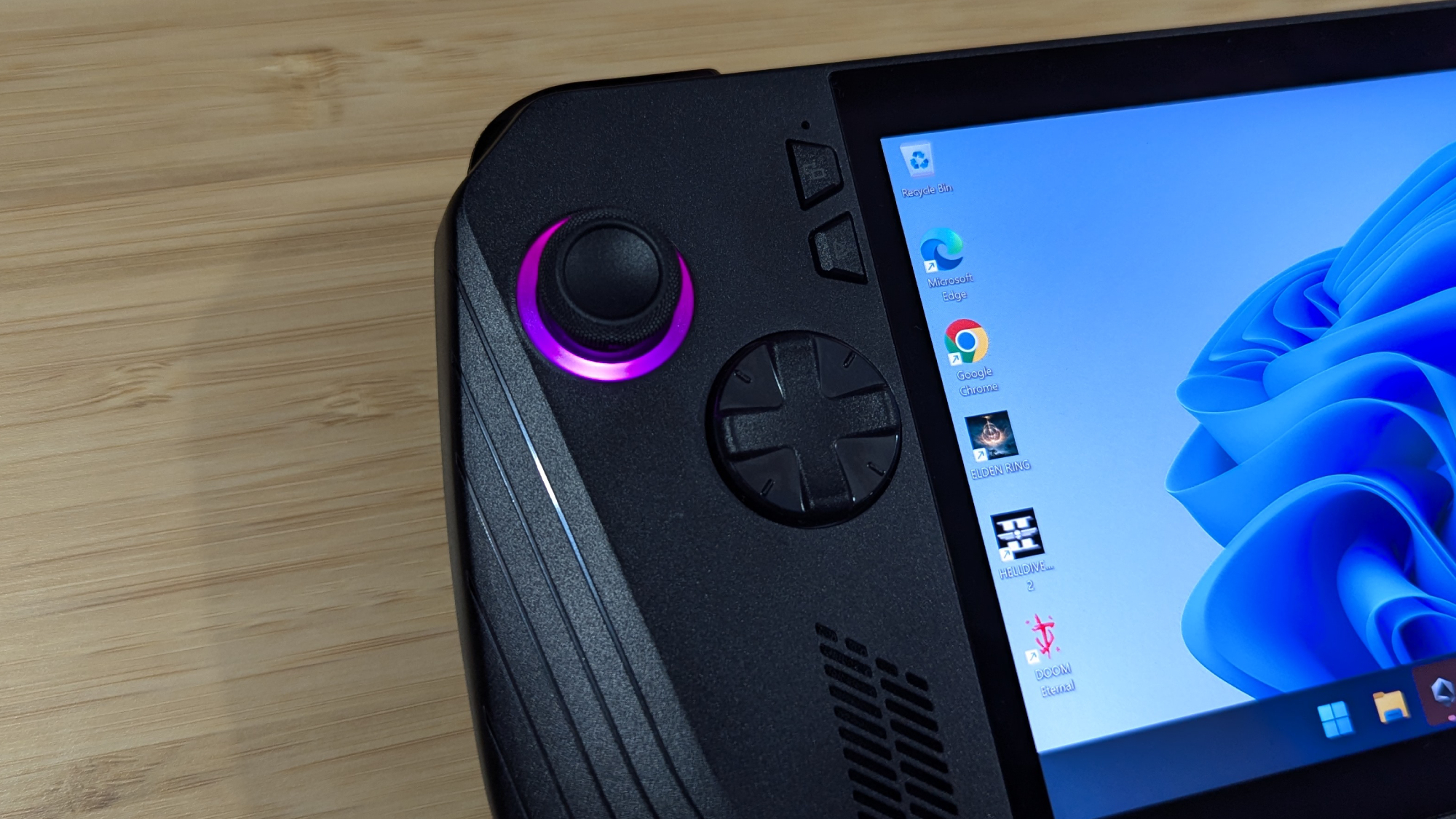
I listened to Franz Ferdinand’s post-punk jam “This Fffire,” which was impactful without sacrificing clarity. The chaotic percussion and guitar strumming balance well against the melody and vocals, and as the track reaches its explosive climax, it boasts a compelling punchiness. It’s far from perfect, though, as when the music gets especially loud, it can become staticy.
I rode throughout the Scorched Ruins in Elden Ring: Shadow of the Erdtree and was serenaded by the peaceful ambiance and atmospheric music. I found a group of shadow enemies to battle, leaped off my steed, and slashed through them, the sharp sound of the blade coming across crisp and clear through the device.
Asus ROG Ally X: Gaming and graphics
If you were hoping the Asus ROG Ally X would improve its gaming performance, you’ll be a tad disappointed. It features the identical AMD Ryzen Z1 Extreme as its predecessor.
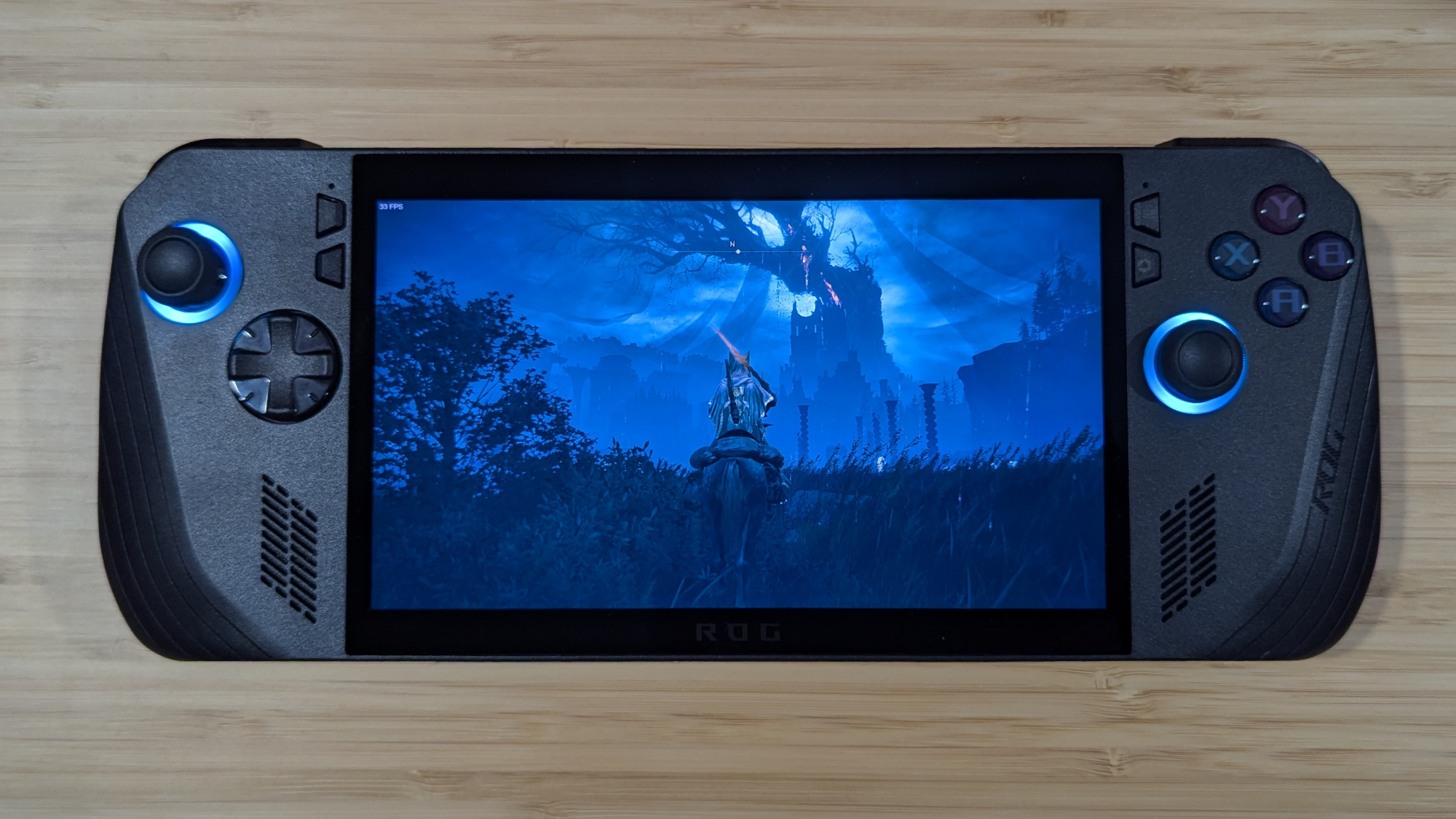
However, the RAM bump from 16GB to 24GB is a welcome addition and enhances stability. It can also improve performance in small ways, as the original Ally allocates 4GB of RAM towards its integrated graphics, but the default for the Ally X is 8GB.
I put the Ally X through a difficult test by playing Elden Ring: Shadow of the Erdtree at maximum graphics with ray tracing turned all the way up. At 1,920 x 1,080-pixel resolution, it managed anywhere from 27 to 35 frames per second while battling enemies and riding through the Scorched Ruins area.
I experienced one stutter while playing, but it remained mostly smooth until I hit a massive dip in framerate, where I hovered around 20 fps, and it stayed that way for the remainder of my playtime. The base Ally didn’t even start high, immediately hovering at around 15 to 20 fps at these settings.
I then launched Helldivers 2 on Low graphics settings at 1080p resolution and managed a solid 35 frames per second while walking around the starting ship. I landed on Estanu and hovered around 44 frames per second while exploring the snowy wasteland. It stayed around 42 fps on the base Ally, which isn’t a massive difference. The MSI Claw would occasionally stutter and hovered around 30 to 40 fps, yielding unreliable consistency.
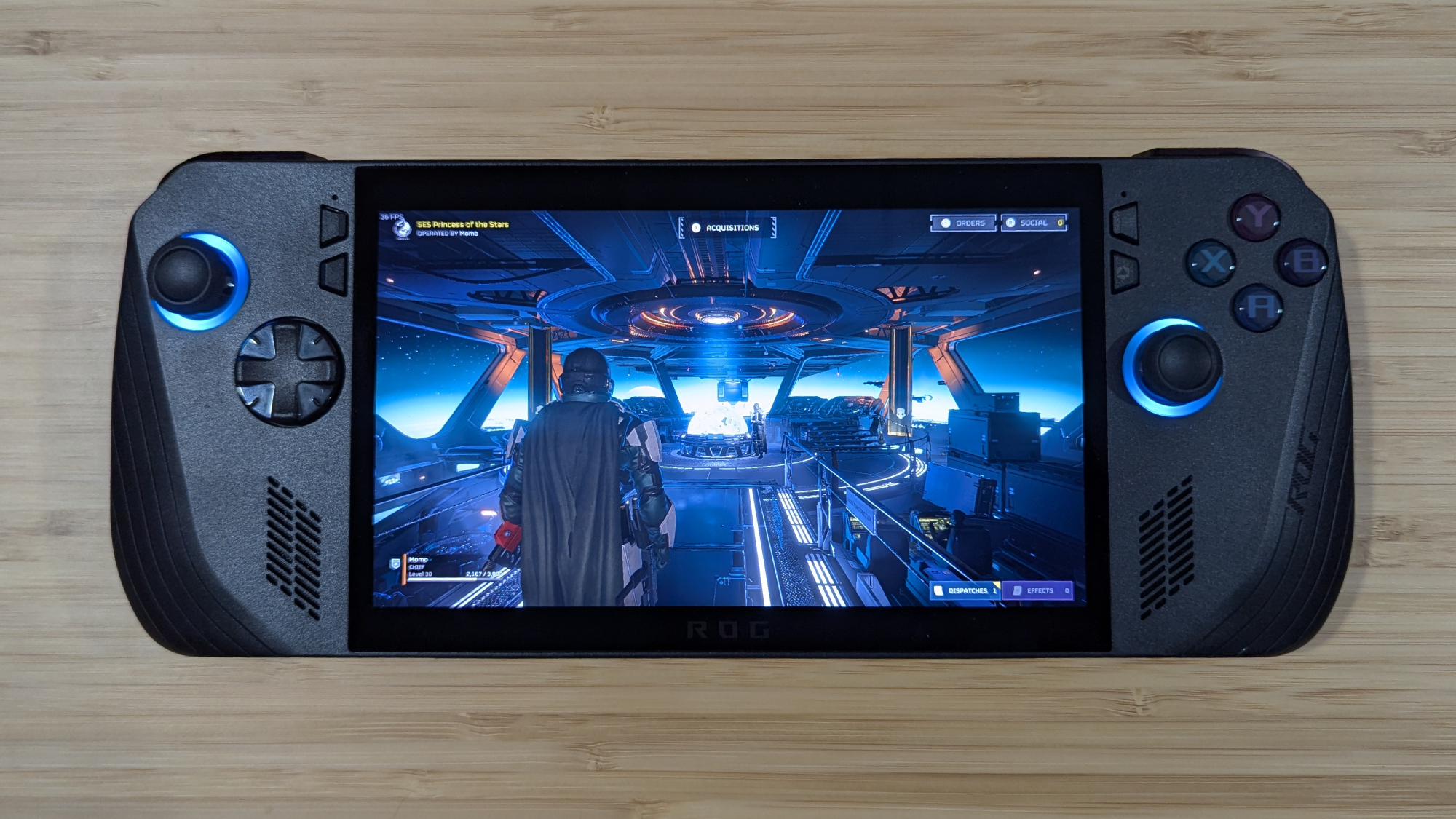
Finally, I jumped into Doom Eternal and ran around Cultist Base, and as I ripped and tore through a horde of demons, both the Ally and Ally X maintained around 60 to 70 frames per second on high graphics at 1080p while the Claw hovered around 40 to 50 fps.
During the Shadow of the Tomb Raider test at 1080p on maximum graphics settings, The Ally X hit an average of 22 frames per second. The MSI Claw could not run the test successfully, whereas the Lenovo Legion Go (20 fps) was in the same range.
In short, the performance improvements that result from the Ally X’s 24GB of RAM won’t be major, but they’re still nice to have. This is a big part of why we believe the Ally X is reserved for dedicated gaming enthusiasts, as you can get similar performance in the Asus ROG Ally Z1 Extreme model for a couple of hundred dollars cheaper.
Asus ROG Ally X: Performance
There’s not much new to say about performance when it comes to the Ally X, as it’s powered by the same AMD Ryzen Z1 Extreme processor as its predecessor. But, the jump to 1TB of SSD storage has brought a huge boost in SSD speeds, and the upgrade to 24GB of RAM helps with performance and stability in the long run.
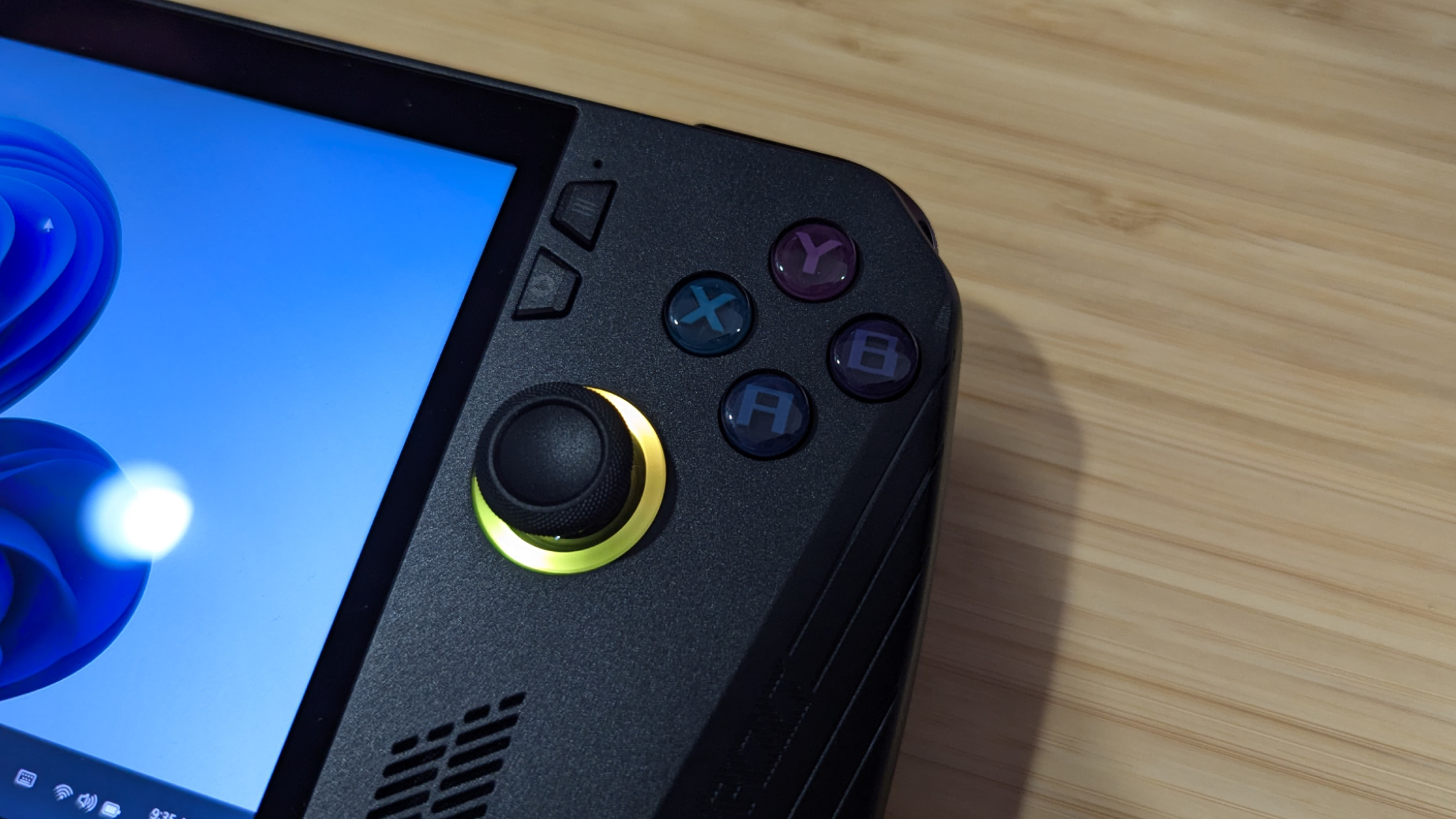
On the Geekbench 6.2 overall performance test, the Ally X’s multi-core score of 11,255 is pretty great. This puts it ahead of the category average of 10,621, while the MSI Claw (10,209), Lenovo Legion Go (9,627), and Asus ROG Ally (11,041) are all a bit behind.
When converting a 4K video into 1080p using the HandBrake app, the Ally accomplished the task in 6 minutes and 45 seconds, which is slower than the category average of 4 minutes and 17 seconds. The MSI Claw (6:22) and Asus ROG Ally (4:56) handled it quicker, while the Lenovo Legion Go (9:24) was an absolute slowpoke.
| Handheld | Geekbench 6 | Handbrake time | SSD Write speed |
|---|---|---|---|
| Asus ROG Ally X | 11,255 | 6:45 | 1,346Mbps |
| MSI Claw | 10,209 | 6:22 | 920Mbps |
| Asus ROG Ally | 11,041 | 4:56 | 769Mbps |
| Lenovo Legion Go | 9,627 | 9:24 | 1,432Mbps |
The Ally X duplicated 25GB of multimedia files in 20 seconds at a transfer rate of 1,346 megabytes per second, a bit slower than the 1,579MBps category average. However, this is still a massive improvement over the original Asus ROG Ally (1TB SSD, 769MBps) and crushes the MSI Claw (1TB SSD, 920MBps). However, the Lenovo Legion Go (1TB SSD, 1,432MBps) lands in first place.
Asus ROG Ally X: Battery life
We don’t have lab tests for the Ally X’s battery life yet, but we will update this review when they are available. In the meantime, I ran my own tests.
I played Elden Ring at 1080p with graphics set to maximum, ray tracing turned all the way up, brightness at full, and operating mode on Turbo. I kept it going until it ran out of juice, and the Ally X lasted 2 hours and 15 minutes with its 80Wh battery. I put the Asus ROG Ally Z1 Extreme through the same test under identical conditions, and with its 40Wh battery, it lasted 1 hour and 1 minute.
Based on this test, the Ally X lasted more than twice as long as the original model, which is fantastic and indicates how much better the X is in longevity.
Asus ROG Ally X: Software and warranty
While the Ally X is installed with Windows 11, any gaming handheld needs solid built-in software. Using these devices like a computer won’t always be convenient, and applications like Armoury Crate help a lot with that. There’s a dedicated button on the device that instantly opens the application, allowing the user to modify system settings, remap the gamepad as they please, and access their game library.
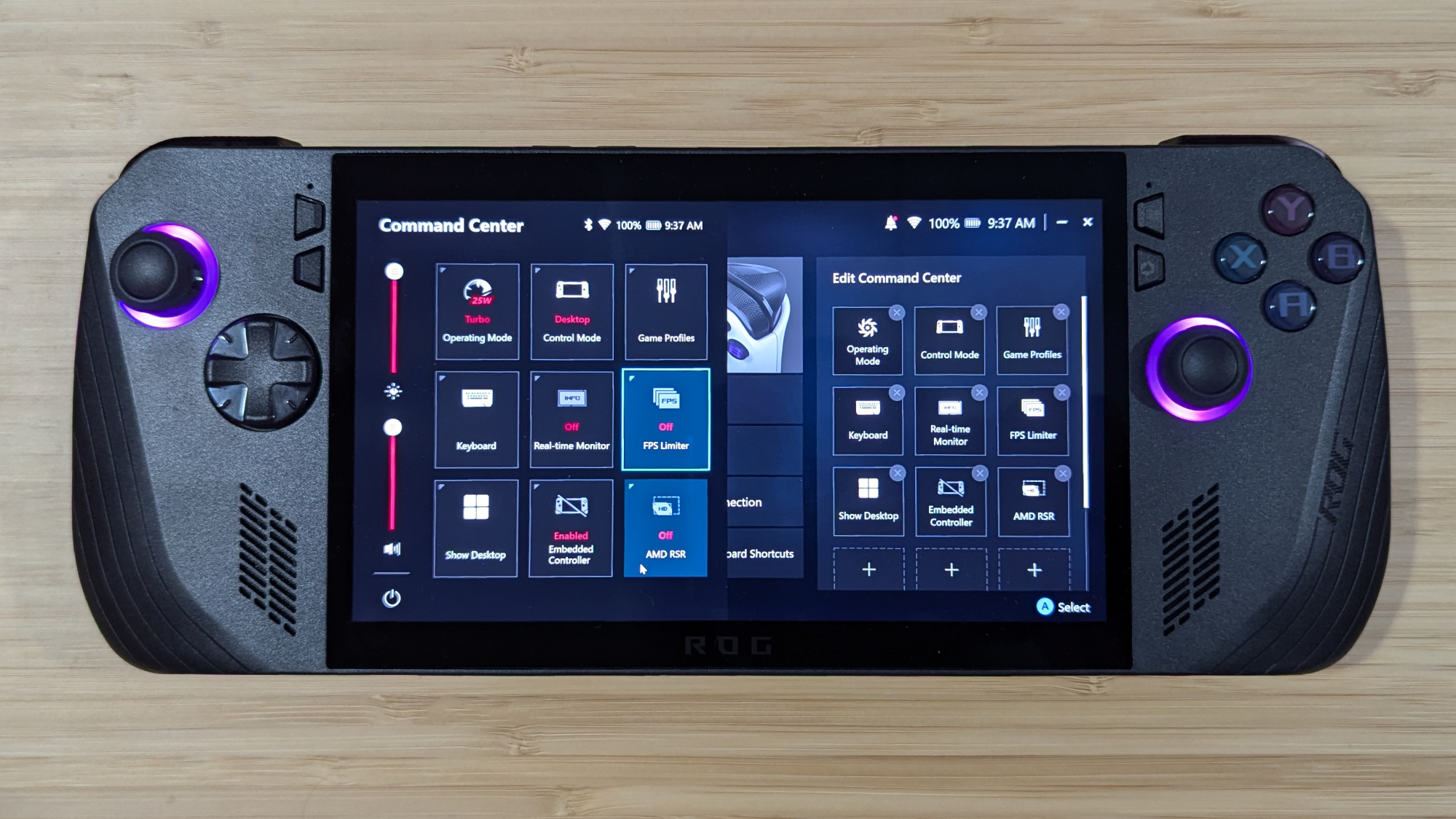
A quick menu button also accesses important settings like swapping between Desktop, Gamepad, or Auto control modes, showing the desktop, or swapping operating modes. Beyond that, the Ally X is automatically configured with many important shortcuts you can use through the back pedals. While they may take a while to memorize, they make using the device far more convenient.
The launch of Ally X also brings a new version of Armoury Crate, providing an updated user interface with additional functionality. Rather than having every app haphazardly scattered across a single library screen, there are now three available tabs.
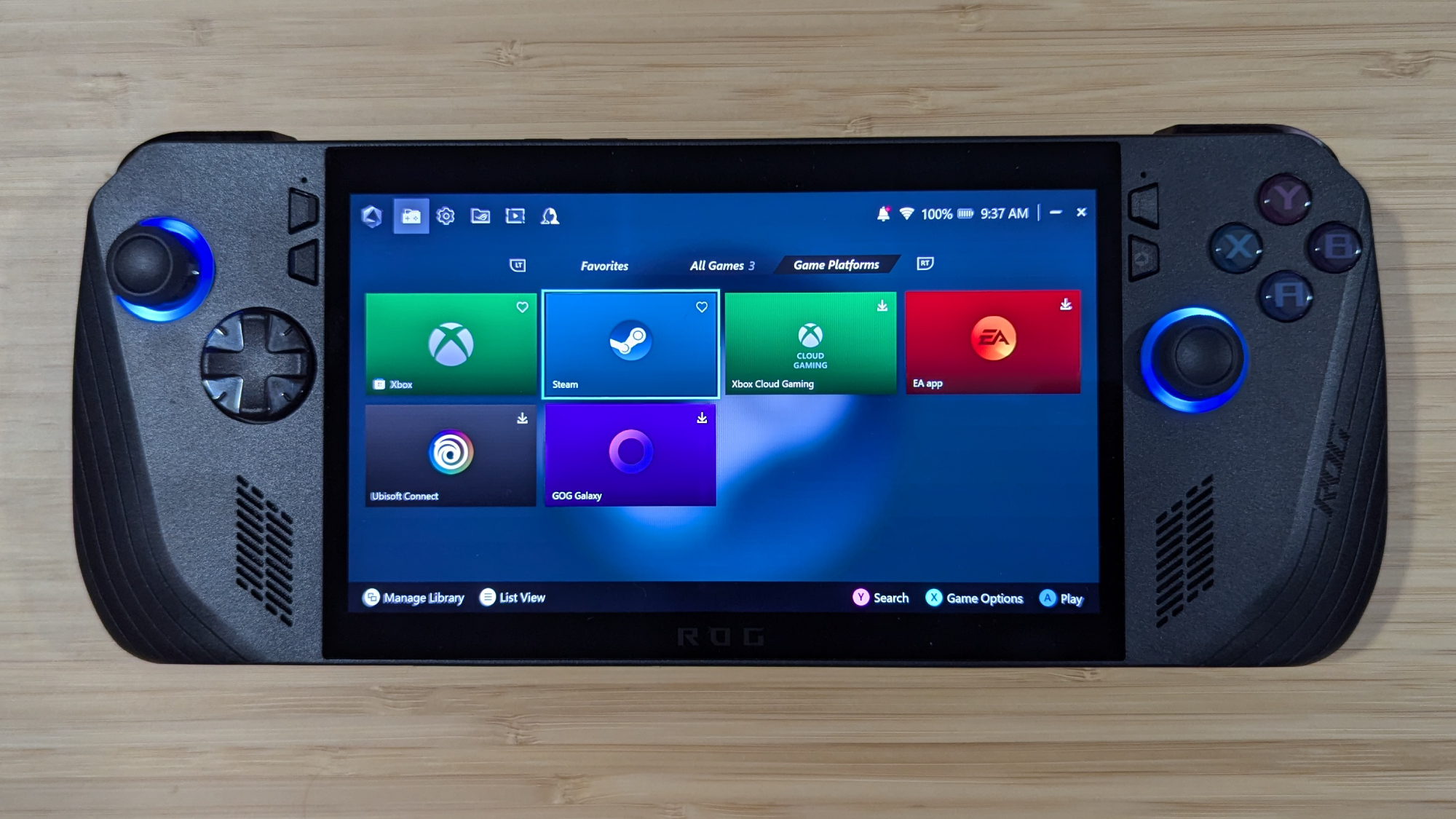
The basic All Games collection is at the center, listing every video game you have downloaded. To the right is the Game Platforms tab, which keeps track of applications like Xbox, Steam, EA App, Ubisoft Connect, and more. At the right is the Favorites tab, a curated section for what you want to access quickly.
The base Asus ROG Ally will also receive this update.
The Ally X comes with a two-year warranty for parts and labor. You can see how Asus did in our Tech Support Showdown special report.
Asus ROG Ally X: Heat
I was pretty impressed with the Ally X’s ability to remain cool while I jumped between Elden Ring: Shadow of the Erdtree, Helldivers 2, and Doom Eternal.
To test if the Ally X had truly enhanced its cooling solution, I played Elden Ring: Shadow of the Erdtree on both. The Ally was a little warmer, probably thanks to the Ally X’s improved ventilation due to an upgrade from 47-blade to 77-blade fans.
Bottom line
The Asus ROG Ally X is a mid-cycle refresh that maintains the original’s processor and display, yet its vital improvements are majorly successful.
With 24GB of RAM, an 80Wh battery, 1TB of SSD storage, and ergonomic enhancements that bring new levels of comfort, we’d recommend the Ally X to anyone who has yet to invest in a handheld gaming console. If you already own an Asus ROG Ally with a Z1 Extreme Processor, it’s not worth spending $799 for something with the same chip and panel unless you’re a huge enthusiast for this type of hardware.
If this is your first device and you’re willing to invest $799, the Asus ROG Ally X is the best Windows gaming handheld available.
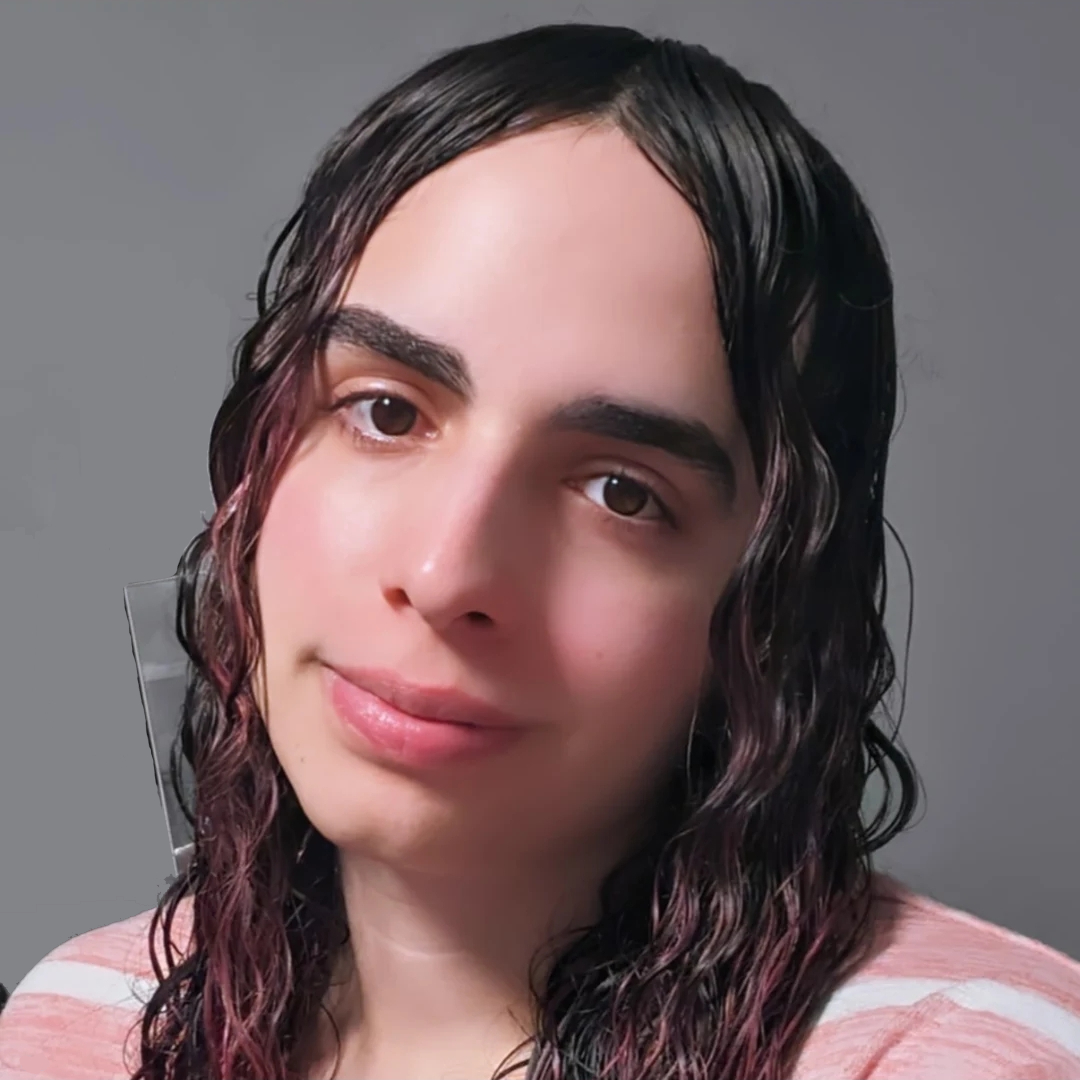
Self-described art critic and unabashedly pretentious, Claire finds joy in impassioned ramblings about her closeness to video games. She has a bachelor’s degree in Journalism & Media Studies from Brooklyn College and five years of experience in entertainment journalism. Claire is a stalwart defender of the importance found in subjectivity and spends most days overwhelmed with excitement for the past, present and future of gaming. When she isn't writing or playing Dark Souls, she can be found eating chicken fettuccine alfredo and watching anime.
